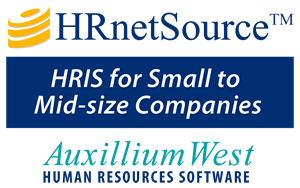Administering Flexible Spending Plans
Purpose of Process:
To provide an attractive, low-cost and popular benefit to employees.
Flex Benefit Overview:
Flexible Spending Accounts (FSAs) allow employees to set aside money on a pre-tax basis to pay for health insurance premiums, non-reimbursed health care costs, and/or dependent care expenses, creating additional take-home pay for the employee. There are a number of administrators who can install and administer these programs. They are an effective way of reducing payroll costs for the company and providing benefits that are too costly to fully reimburse (e.g. orthodontia).
Also known as Section 125 Plan or Cafeteria Plan, it gives preferential tax treatment to three types of expenses:
- Insurance premiums
- Health care
- Dependent care
With the Flex Premium plan, the employee portion of insurance premiums are withheld from the employee paycheck prior to withholding taxes, thereby reducing the withholding taxes and increasing take-home pay.
Employees who participate in the Health Care Reimbursement plan, estimate health care expenses for the coming year and authorize an appropriate salary reduction. The health care expenses are placed in "escrow" (normally held by an independent administrator) called a flexible spending account (FSA).
When an eligible expense is incurred, the participant submits a provider receipt and receives a tax-free reimbursement from the flexible spending account.
Similarly, dependent care expenses are estimated at the beginning of the year. When they have been incurred for the month, the participant requests tax-free reimbursement from the Dependent Care flexible spending account.
Flexible spending accounts include a "Use It or Lose It" provision. Any unclaimed money at plan year end is forfeited to the employer. Typically, if the employee anticipates surplus money at year end they can deplete the account by buying an extra pair of glasses, refilling a prescription, or moving up an annual physical exam, etc.
Another rule requires that participants have access to their full annual allowance at any time during the plan year. On occasion, the employer may have to advance funds to the Flex Plan account. Such advances are reclaimed from employee contributions in subsequent months. These advances can be lost if the employee terminates during the plan year prior to repaying the advance.
Recommended Steps in the Process:
- Contact a third party administrator for help in setting up and
administering the plan. In addition to helping implement the
plan, the third party administrator issues the reimbursement
checks to employees and files the required government reports.
- Familiarize yourself with the basic provisions of FSA
regulations including reimbursable expenses and non-reimbursable
expenses. Available from the IRS web site is information on medical
and dental expenses (Publication 502) and dependent care
expenses (Publication 503). The third party administrator
can also provide information on FSA's.
- Determine the basic design features of the plan:
- Currently there is no limit on the amount an employee can contribute health care reimbursement account. However, a company can set an annual limit. Setting an annual limit can reduce the potential loss from an employee who terminates employment at a point where his/her plan reimbursements exceed their plan contributions.
- For tax years beginning after 2012 employee contributions to the flexible spending arrangement made through a salary reduction is limited to $2,500. Beginning in tax years after 2013 the limit will be subject to a cost-of-living adjustment.
- Plan implementation generally occurs at the beginning of the calendar year.
- Communicate the plan to employees:
- Hold company meetings
- Publish details on the HR Intranet
- Post information on company bulletin boards.
- Distribute literature and enrollment forms (see sample)
- Coordinate the enrollment process with payroll and the third
party administrator.
- Provide FSA literature and enrollment forms (see
sample) to new hires as part of the orientation process.
- Perform other minor administration tasks such as processing
election changes. Note that the plan cannot allow employers to
change or revoke elections except for certain circumstances as
described below. An employee certification can be accepted as
proof of the change.
- Death of the employee's spouse or a dependent
- Birth or adoption of a child of the employee
- Placement for adoption
- Loss of use of a member or function of the body
- Marriage or divorce of the employee
- Divorce decree requiring a change in dependent coverage
- Termination or commencement of employment of an employee's spouse
- An unpaid leave of absence by the employee or the employee's spouse
- Change in employment status such as termination or changing from full-time to part-time by the employee or the employee's spouse
- Significant (not defined by IRS) increase or decrease in employee benefit costs
- Significant improvement or reduction in benefit plan coverage
- As employees incur expenses, they will be instructed to complete a reimbursement form, attach a copy of the receipt, and send it to the third party administrator for reimbursement. The third party administrator will provide statements to employees on their FSA account balance.
Process Tips:
Continue publicizing this popular benefit. Include the FSA benefit among other benefits listed on recruiting literature.
How HRnetSource™ Can Help:
HRSource™ and SelfSource™ help support FSA administration in several ways:
- Employees can view their FSA elections and related costs in
SelfSource™.
- Employees can enroll in the FSA plan using
SelfSource™ .
- FSA deductions can be electronically transmitted to payroll
via the HRSource™ payroll interface.
- HRSource™ can generate employee benefit statements that itemize benefits, including FSA contributions.
